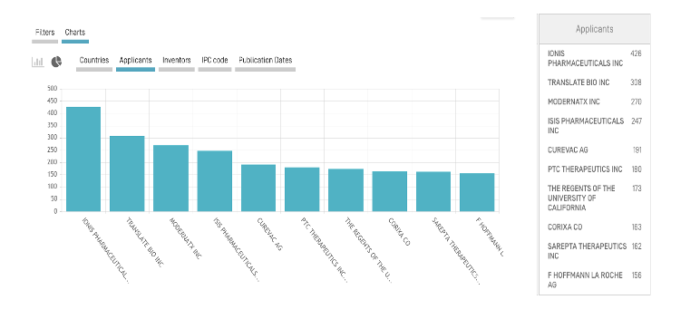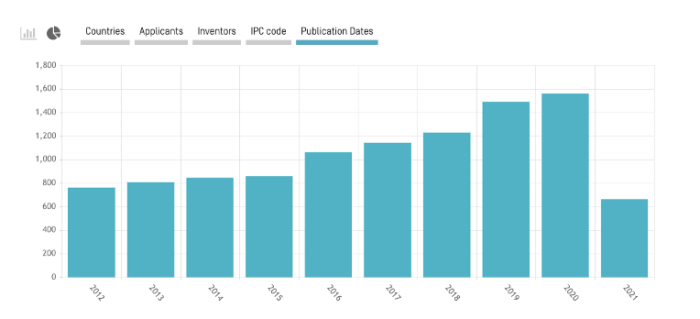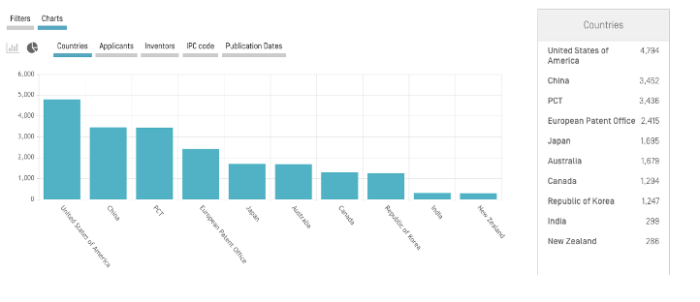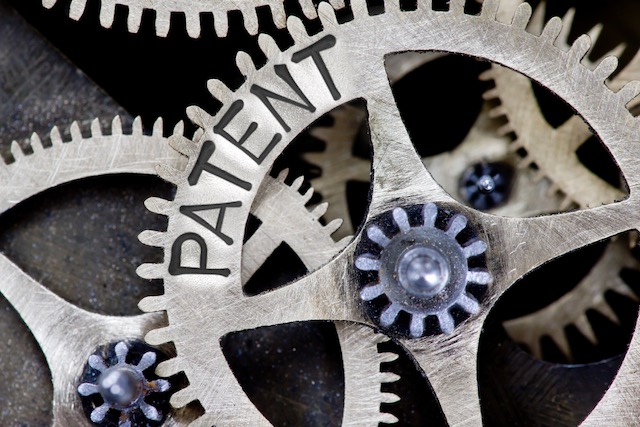Posted on
By Ms Odireleng Keipopele, Patent Examiner (Biochemistry), ARIPO
Inventions are considered to be the bedrock of innovation and are instrumental in providing new solutions to technical problems. Inventions are protected through application for grant of a patent at a National Intellectual Property Office or Regional Intellectual Property Office. The patent is used to protect the interests of the inventors. This ensures that the inventors are granted the exclusive rights to commercially explore their patents and prevent unauthorised use of the patent. This includes selling, manufacturing the products for commercial economic use.
The criteria that needs to be met for the patent to be granted is that the inventor has to determine beyond reasonable doubt that their invention is new, useful and also that it is not obvious to someone who is working and also related to the field through describing how the technology works and what it can do.
The patent is granted through the use of the national laws, which may differ from country to country; and last for 20 years period with the patent holder paying maintenance fees annually. While rewarding the inventor through commercialising the technologies, the inventor in exchange provides a detailed description of the invention and how it works. This is technological information and it is freely available to the public as patent information.
What is Patent Information
Patent information is the comprehensive source of the technical, commercial and legal information of a patent. It is necessary for the adaptation and the improvement of technologies. It has two components; bibliographic data and patent specification.
Bibliographic data is found on the front page of the patent document, It contains the important legal information of the patent, i.e. the owner of the patents, where the patent originates, where the patent is filed, the filing date of the patent, publication date as well as the title of the invention and the abstract (summary of the invention with a drawing or chemical formula or none depending on the field of Technology).
The patent specification on the other hand provides the technical details of the invention that claims the patent rights. The patent specification serves two purposes; It identifies the subject matter that the patent owner intends to claim exclusively, It also discloses the invention sufficiently clear enough to be carried out by the person skilled in the area of technology. The patent specification includes the title of the invention, the abstract, description, patent claims and the drawings where applicable.
The title of the invention gives a clear indication of the technology to which the invention relates to.
The abstract provides a summary of the invention.
The description provides the information of what the invention relates to, It gives the advantages of the invention in relation to the other similar inventions.
The patent claims determine the patentability of the invention and it is determined by the claims, they define the scope of the invention and they are fully supported by the description.
Users of Patent Information
Patent information is important in research and development as it encourages innovation, in SMEs, Industries, research institutions and academia. It plays an important role in the development of new technologies through funding and research. The funding is very important in most publicly funded universities and in publicly funded research institutions since it encourages research institutions and academia in generating commercially viable technologies or products or can form (spin-offs) which can later be adapted in the industry for commercial purposes and create jobs for the community. The Patent Attorneys and Patent Examiners are instrumental in ensuring that the patent filed, granted, maintained and exploited fairly through the use of the patent information.
Where Is The Patent Information Found
Patent information is available online in patent databases
e.g. Patentscope and Espacenet.
Uses of Patent Information
The use of patent information can be classified as being legal, technical and business, and policy wise.
Legal Use Of Patent Information
The patent information can be used legally by the Patent Examiner in determining the patentability of the new patent application through comparison of the new patent application with the patent information existing in the prior art searches or the information in the public domain.
Patent information can be used legally in avoiding the infringement of the already active patents through searching to avoid duplicating the patents which are already in existence as well as determining the areas/territory where the legal status is still active when considering to establish a business operation.
Technical Use Of Patent Information
The technical patent information can be used to develop solutions to technical challenges that may be facing the country or the global world.
For example, BioNTech (Germany) and Pfizer (USA) vaccine patent landscape, the use of patent information has been directed at vaccine technologies for easy access and fair allocation and transferring technologies to the relevant manufacturers.
BioNTech and Pfizer have been involved in the mRNA vaccine with an inexhaustive list of patents extending from the mRNA structure, formulations and manufacturing. They have generated a pool of knowledge on the lipid nanoparticle mRNA vaccines and this had been used to come up with the mRNA Covid-19 vaccine.
mRNA (messenger Ribonucleic Acid) is naturally found in the cells of living organisms is used to produce proteins. The research industries have done research and have been able to synthesize the mRNAs for use in drug development and vaccines.
Both BioNTech and Pfizer have been involved in using lipid nanoparticles (NP) technologies to deliver mRNA to cells. In the case of the Covid -19 vaccine, the lipid nanoparticles with mRNA are injected into a patient and they get into the cells which instruct the body to produce proteins that aid in the production of antibodies that will bind the virus of the infected person causing the elimination of the virus.
Below is a list of some of the mRNA Nano particle lipids related patents;
| Patent/Published Application | Applicant/Assignee | Filing Date | Status | Invention Type |
| US 10,576,146 | BioNTech | March 15, 2018 | Active | Lipids/NP + mRNA |
| US 10,485,884 | BioNTech | March 5, 2013 | Active | Lipids/NP + mRNA |
| US 9,950,065 | BioNTech | September 26, 2013 | Active | Lipids/NP + mRNA |
| US2020/0155671 | BioNTech | January 22, 2020 | Pending | Lipids/NP + mRNA |
| US2020/0197508 | BioNTech | March 21, 2018 | Pending | RNA immune response |
Business And Policy Use Of Patent Information
Business Tracking
Business tracking can be used in knowing the technology leaders in a certain area of the invention, principal innovators in different areas of technologies. As in Figure 1 below, if for example Pfizer and BioNTech are developing the technologies and having a patent application, It is necessary to know other patent applicants involved in the mRNA research. This information is important in planning commercial and research development activity; identifying the potential collaborating partners, joint ventures as well as identifying where to get a license or even whom to sell the invented technologies to.

Identifying Key Trends in Technology Developments
The key trends of the technology through the use of patent information are determined through the generated data which determines the number of patents filed, granted patents and where they are in force and how the growth of change in patent activity has been with time. This is necessary for determining where the technology is used mostly and also avoiding spending money/revenues where there won’t be returns economically.

From Figure 2, This information regarding the mRNA patents indicates that it is increasing with time. If for example Pfizer and BioNTech are interested in this kind of research, it will be important to know its trend. If it is filed more regularly then it is an indication that it is needed most.

Figure 3, shows the countries which are mostly instrumental in filing the mRNA patent applications. The information is necessary for establishing a business in the respective countries to know such information to avoid infringing active patents or duplicating the research that has already been carried out.
What’s The Role Of ARIPO in Encouraging the Use of Patent Information
Publication of the ARIPO Patents
ARIPO generates the patent journals which are published monthly. This encourages the innovators and other patent users to be aware of the technological trends, to use the information to come with more research, to be aware of the latest trends of technologies as well as identifying potential business partners and mentors in a specific area of technologies.
Building Awareness
ARIPO with its mission to foster creativity and innovation for economic growth and development in Africa, with innovation and creativity as some of its core values, is tasked with the responsibility of encouraging and sensitising the Member States with the importance of patent system and using patent information in their respective researches i.e. academia, research institutions, small-medium enterprises (SMEs) to come up with researches that are patentable and commercially viable. SMEs can use the patents that have already expired to generate products.
In conclusion, the use of patent information can be regarded as a cornerstone that can be used to generate more research which can, in turn, generate more patents.
Bibliography
https://www.fpapatents.com/drafting-patent-specifications
https://www.mondaq.com/india/patent/550572/patent-specification–where-the-rubber-meets-the-road
https://www.wipo.int/edocs/pubdocs/en/wipo_pub_l434_3.pdf

